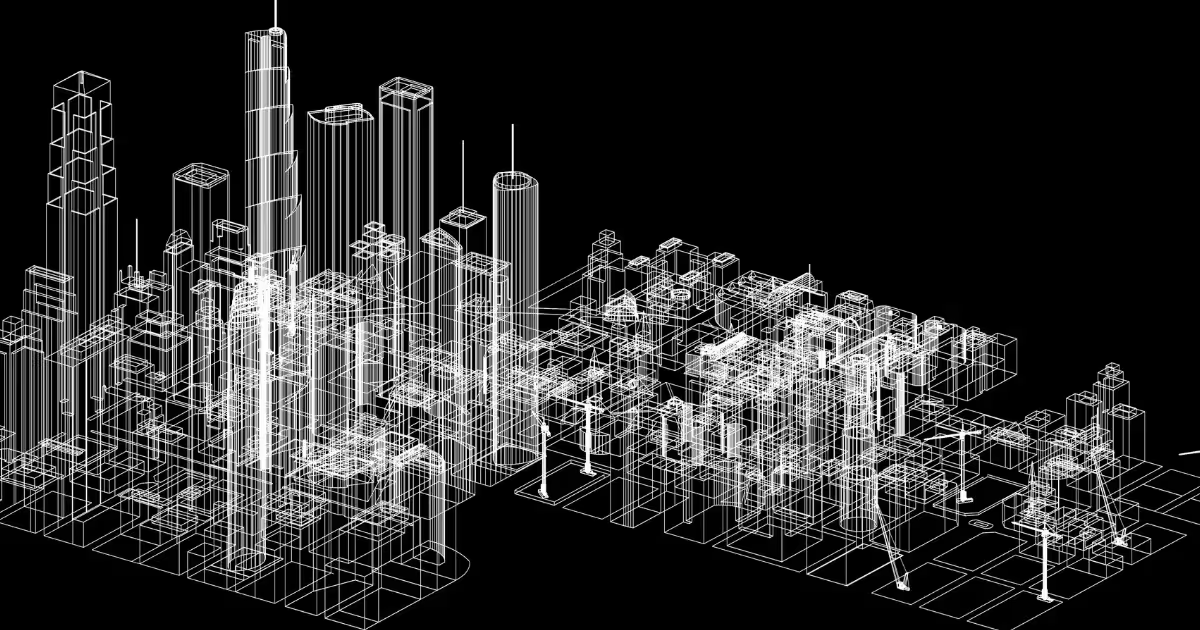
Vectorworks and ArchiCAD are among the top tools for architects, but how do they compare against each other, and which is the best overall for architecture design and BIM?
Both Vectorworks and ArchiCAD feature 2D and 3D drafting, parametric modelling, and visualisations as part of the software, although there are some distinct differences between the two in terms of features.
Vectorworks Features
Whilst being slightly steeper learning with Vectorworks, the user is provided with a range of BIM and creative functions.
With Vectorworks, you can do set design and landscaping, and the 3D modelling can be annotated with figures and other useful data.
In terms of the BIM functions, Vectorworks includes building performance analysis schedule automation and cost estimation tools
Vectorworks comes in four main product categories for distinct groups of customers
- The architect version features architectural design and BIM
- The landmark version of Vectorworks is for Landscape Design
- The spotlight version is based on entertainment and set design
- The fundamentals version of Vectorworks is more of a basic package for simple modelling and documentation.
In terms of integration with other software, Vectorworks is probably the better of the two, with more file types available as default than on any other BIM software.
Vectorworks is more limited in terms of plug-ins, and those that are available tend to be geared towards visualisation and modelling.
Advantages of ArchiCAD
As with Vectorworks, ArchiCAD features 2D and 3D drafting, parametric modelling, and BIM functions.
ArchiCAD is aimed solely at architects and is mostly based around architectural design and BIM planning.
The user interface for ArchiCAD is more intuitive and user-friendly than Vectorworks and there is not as much of a steep learning curve. However, there is less flexibility in terms of customisation of the interface, as with similar software such as Vectorworks.
ArchiCAD is more focused on the design phase, with better databases, geometry controls, and easier access to data.
ArchiCAD also works alongside BIMcloud, which is a cloud-based server hosting, making it easier to collaborate with other members of the team.
ArchiCAD also links with BIMx, a presentation tool that is more focused on the client side.
Which BIM and Design Tool is Best for Architects?
To pick a clear winner between Vectorworks and ArchiCAD is somewhat difficult as both have a user-friendly interface and some useful features in terms of BIM functions and architectural planning.
For those looking for more than architectural work and building planning, for example, if you are in the entertainment or landscape design industries, or need more of a presentation and illustration focus to your BIM software, Vectorworks is the clear choice.
For those looking for a solid BIM platform catered specifically to architects that allows them to design a building from concept through to construction, whilst being easy to operate and navigate, ArchiCAD is certainly a valid option and offers more plug-ins and collaborative features through cloud-based software that is linked to the application.
Benefits of Using Cloud Environment for BIM Software
There are several advantages when it comes to using cloud computing in conjunction with BIM software.
For example, with data and modelling stored and accessible via the cloud, any collaborative work between team members is much more of a smooth and streamlined process.
When presenting models and data to the client, it is also a more polished and professional approach to have all the data, software, and hardware available wherever you need it.
There is a further advantage in utilising cloud capability in that you have access to a more or less unlimited capacity in terms of data storage, so you don't need to worry about hard drives and servers filling up with all the large file sizes, and it is no longer a logistical nightmare getting the correct data and saved files to the appropriate members of the team who need them.
Another benefit of using cloud technology for BIM software is that you can have remote access to high-end CPU platforms and virtual graphics processors.
This means that you are not tied to any specific location or expensive equipment when it comes to the processor-hungry tasks of number-crunching the raw data or churning out complex 3D visuals.
Apart from facilitating better remote working, with high-end performance and collaboration available from any device or location, using cloud technology for BIM projects is a more flexible and scalable approach, without the need to invest in expensive infrastructure.
With cloud-based BIM management, everything is available as a managed service and can be scaled up or down as needed.
Enhancing Architectural Planning With Lyon Tech
At Lyon Tech, we provide a wide range of solutions for architects looking to enhance their working processes, making BIM projects and daily operations a streamlined and efficient process.
For AEC firms aiming to stay ahead of the game, we offer a range of services including
- State-of-the-art vGPU and vCPU platforms that are accessible remotely for 3D rendering and processing large data sets
- Fully remote working through cloud technology
- Unlimited storage of data and large file types
- Improved sharing and collaboration through online portals
- Full management and running of any software as needed to free up members of the team
- Strengthening cybersecurity defences to protect the business from intellectual property loss and unauthorised access to critical data.
- 24/7 access to technical engineers for troubleshooting and systems analysis
- Reliable data communications for video conferencing and sharing BIM data with clients
Contact Lyon Tech
For more information on cloud computing with BIM software or technological solutions that can benefit AEC industries, get in touch with our team today.
Our industry experts can give you the full rundown on the latest technology available to support architectural design and advise on which setup will be most suitable for your business needs.


